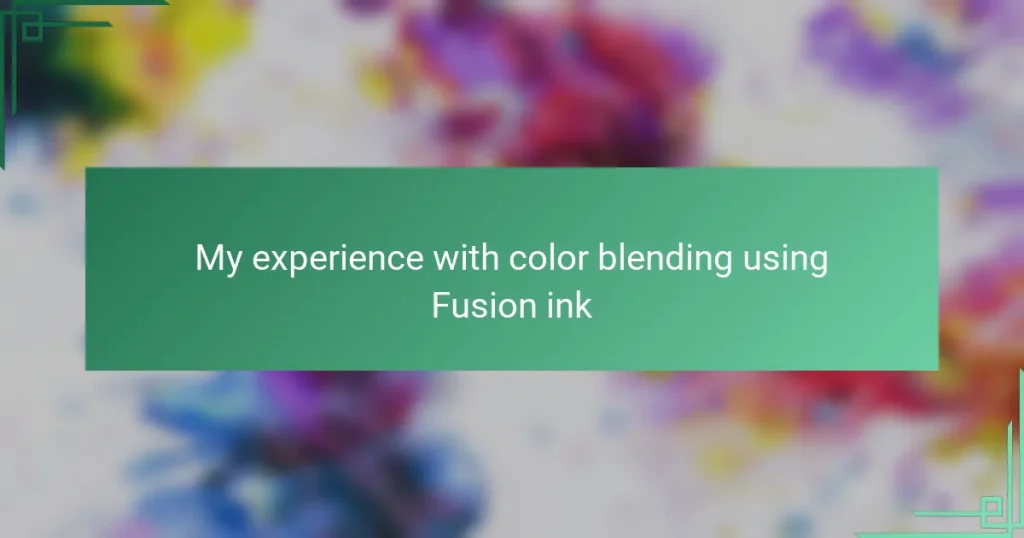Key takeaways
- Color blending in tattoos creates depth and emotional resonance, influenced by skin tones and personalized techniques.
- Fusion ink offers vibrant pigmentation and smooth consistency, essential for achieving seamless and lasting blends.
- Proper skin preparation and workspace organization are crucial for maintaining focus and ensuring quality in tattooing.
- Ongoing care, such as moisturizing and sun protection, is vital for preserving the vibrancy of blended tattoos over time.
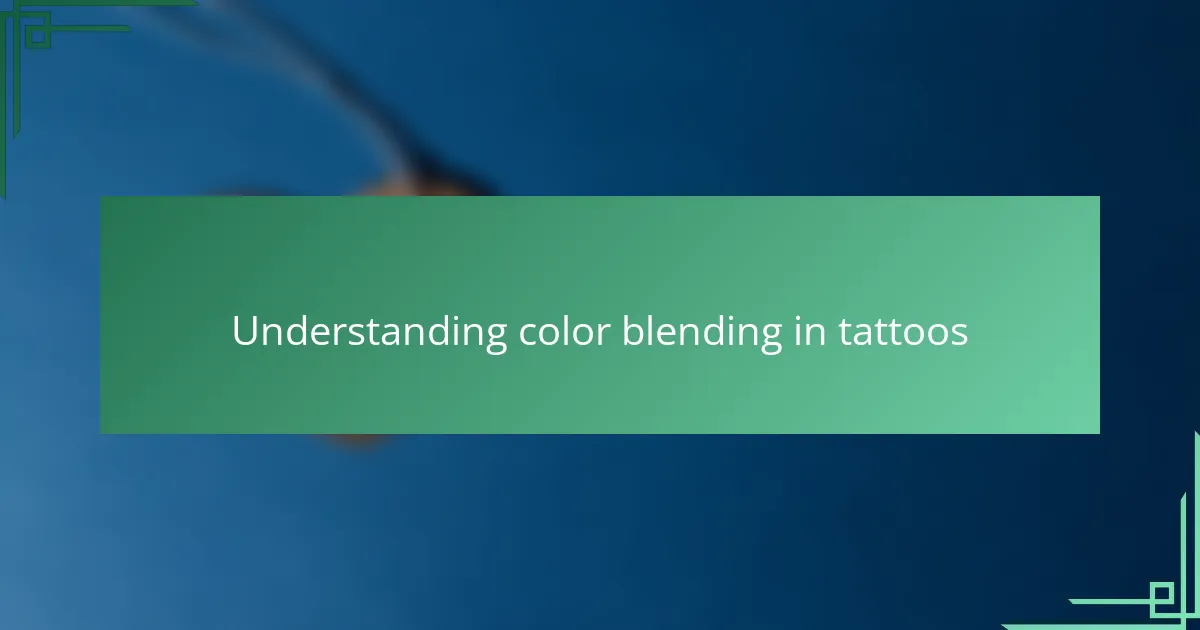
Understanding color blending in tattoos
Color blending in tattoos is more than just mixing hues; it’s about creating depth and movement on the skin. When I first experimented with Fusion ink, I realized how crucial the transition between colors is—it can make a design feel alive or flat. Have you ever noticed how a smooth gradient draws your eye more naturally than harsh lines?
What fascinates me is how subtle shifts in color intensity can evoke different emotions. In one tattoo, blending a soft blue into a gentle pink transformed the entire piece from cold to warm, adding a layer of intimacy I hadn’t anticipated. It made me wonder, how much does our perception of color affect the story a tattoo tells?
Understanding the interplay of pigments with skin tones is also key. Different skin undertones absorb and reflect colors uniquely, so the blending technique needs adjusting for each client. From my experience, this personalized approach turns a simple color transition into something truly magical and lasting.
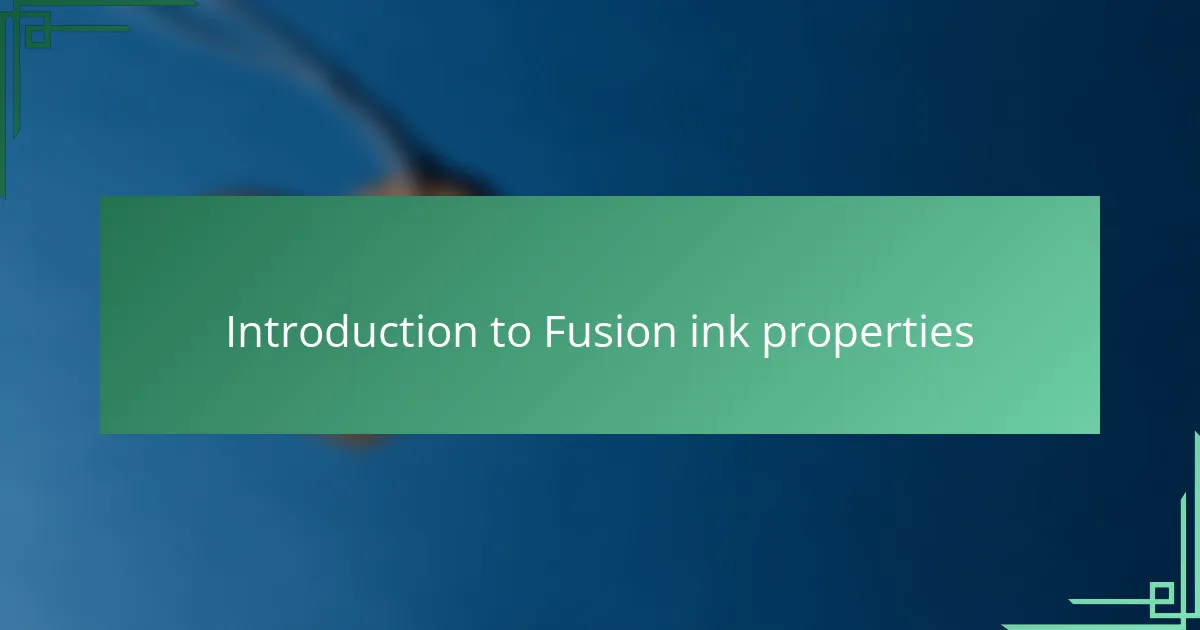
Introduction to Fusion ink properties
Fusion ink immediately caught my attention because of its vibrant pigmentation and smooth consistency. I noticed that the pigments stay true without dulling as they dry, which is essential for achieving seamless blends. Have you ever struggled with inks that lose their brightness mid-session? Fusion ink solves that problem in a way I hadn’t seen before.
What truly impressed me is how Fusion ink behaves under the needle—it flows evenly, making the blending process feel almost effortless. In one session, I was able to create gradients that held their clarity even after healing, which was a pleasant surprise. This ink has a richness that kind of invites you to experiment and trust your instincts.
From a technical standpoint, Fusion ink’s formulation includes high-quality pigments designed to resist fading. This durability means that those subtle color transitions don’t just look good initially—they stay vibrant over time. Isn’t that the ultimate goal for any tattoo artist aiming to create lasting art?
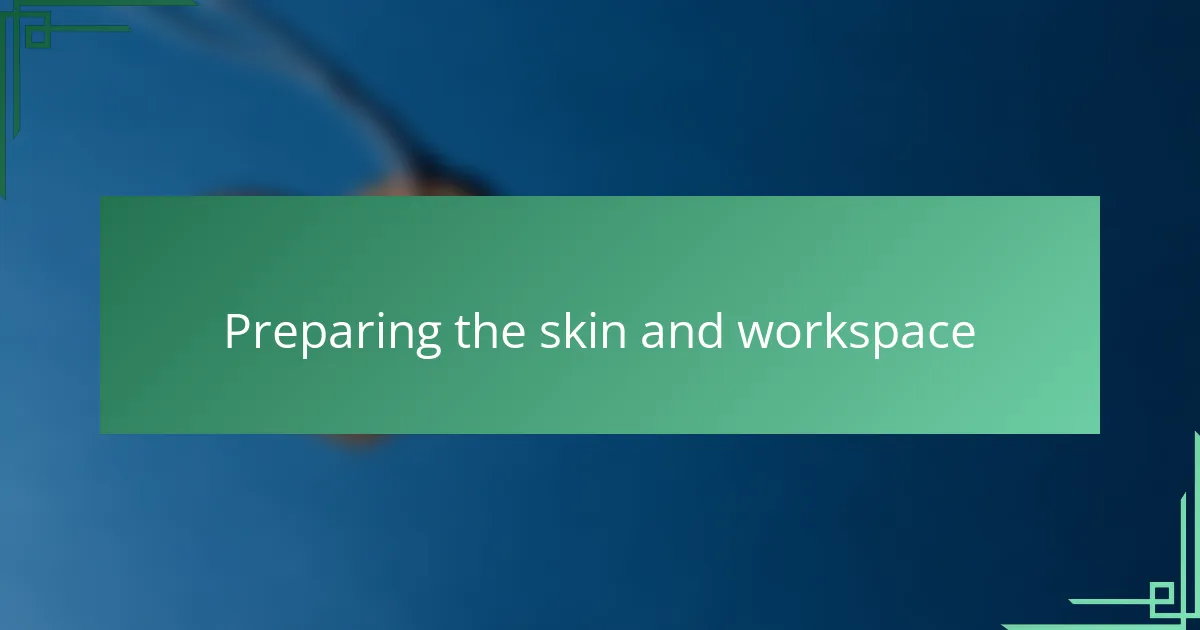
Preparing the skin and workspace
Preparing the skin properly always feels like setting the stage for a great performance. I take extra care to cleanse and shave the area meticulously because any leftover oils or hairs can disrupt the ink flow and blending smoothness. Have you ever started a session only to realize the skin wasn’t prepped right? It throws off the entire process.
Organizing my workspace is just as important. I arrange my inks, needles, and cleaning supplies within arm’s reach to keep the flow uninterrupted. When you’re focused on delicate color transitions, even a small distraction can break your concentration and affect the blend’s quality.
I also make sure the client is comfortably positioned and relaxed because I’ve noticed that any movement during blending can create unwanted lines or smudges. It’s amazing how much a calm environment influences the precision of my work—I’ve learned that art often flows best when both artist and canvas are at ease.
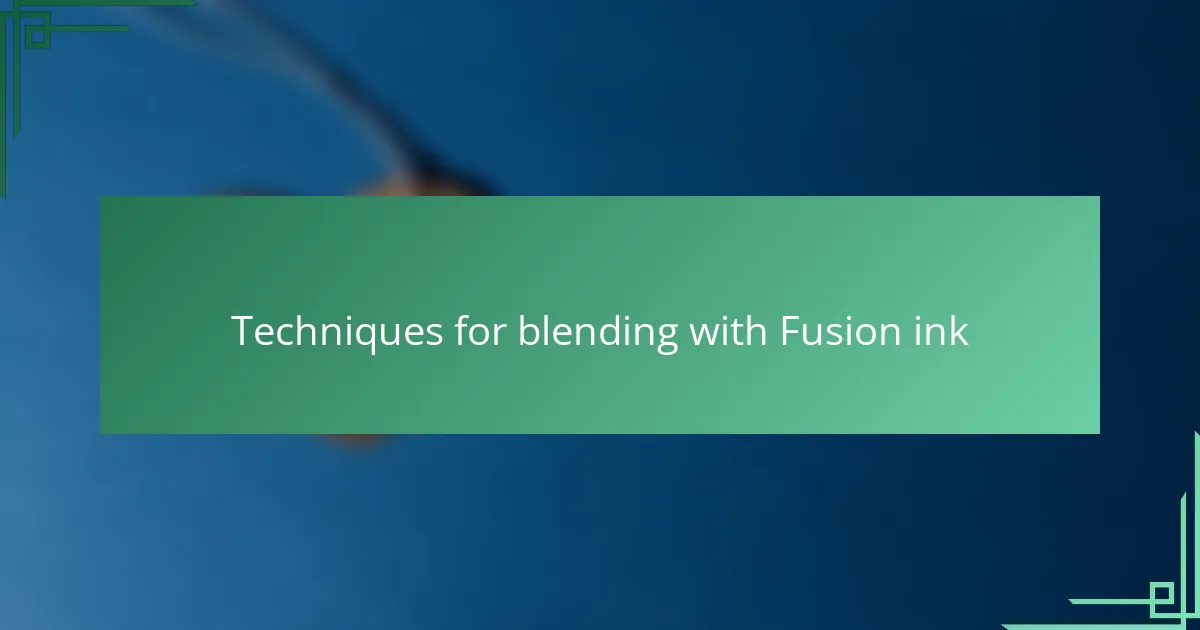
Techniques for blending with Fusion ink
Blending with Fusion ink requires a delicate hand and attentive layering. I often start with a light application, gradually building up the color density to avoid harsh lines. Have you ever noticed how rushing this step can lead to muddy or streaky transitions? Taking it slow truly pays off, letting each shade meld naturally into the next.
One technique I’ve come to rely on is using a soft, circular motion with the needle to blend colors seamlessly. This approach feels almost meditative, and it’s satisfying to watch the pigments swirl together under my skin canvas. The smooth consistency of Fusion ink makes this motion glide effortlessly, which wasn’t always the case with other inks I’ve used.
Another trick involves mixing small amounts of colors right on the skin rather than the palette, allowing for organic gradients that shift beautifully with light. I remember a session where blending a deep purple into a sunset orange resulted in such an unexpected vibrancy—it was like the tattoo was breathing. Isn’t that the kind of dynamic effect every artist hopes to achieve?

Overcoming common blending challenges
Blending colors with Fusion ink isn’t without its hurdles. Early on, I struggled with achieving smooth gradients where colors would sometimes separate or look patchy after healing. Have you ever been frustrated by a blend that seemed perfect at first but lost its charm over time? What helped me was patiently layering thin washes and letting each settle before proceeding—this built a foundation that held strong.
Another challenge I faced was controlling how the ink spread beneath the skin. Too much pressure, and the colors bled into each other; too little, and the transitions were abrupt. Finding that sweet spot took some trial and error, but gradually, I learned to “read” the skin’s response as the needle moved. The tactile feedback became my guide, turning frustration into a kind of dialogue between my hand and the client’s body.
Lastly, color consistency posed a unique challenge, especially when blending darker hues. Fusion ink’s vibrancy can sometimes tempt one to over-saturate, risking muddiness. I had a session where stepping back and resisting the urge to add more pigment truly saved the piece—less really was more. Do you find that holding back sometimes gives your art more breathing room? That restraint often transformed my blends into gradients that felt both rich and effortless.
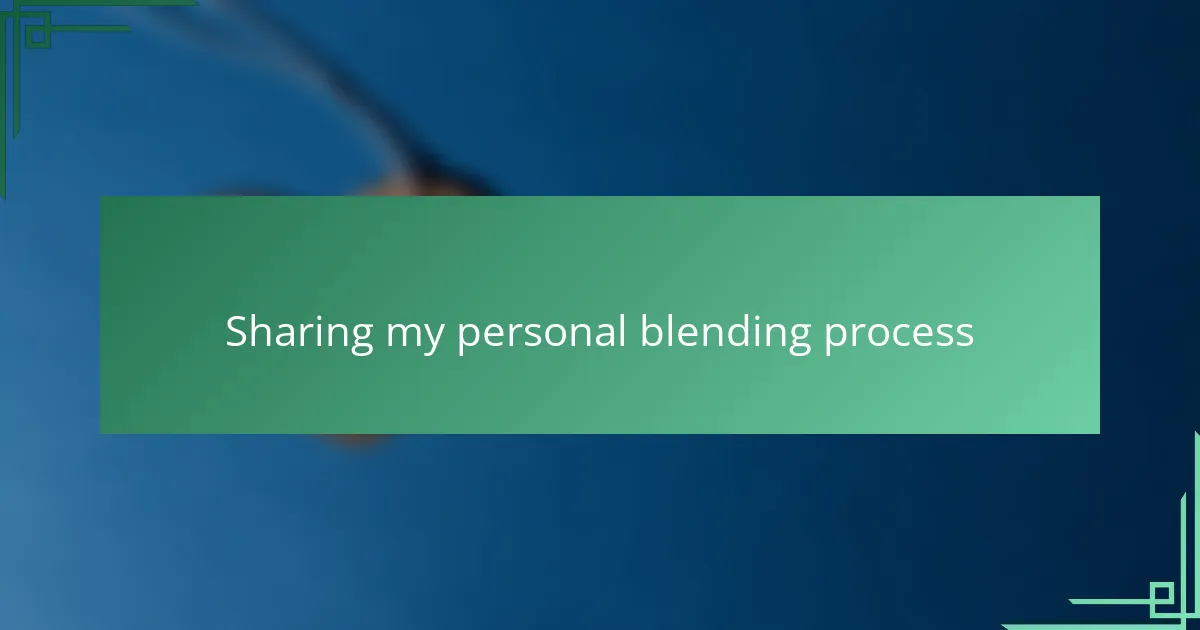
Sharing my personal blending process
When I blend colors using Fusion ink, my process always begins with observing how each hue interacts on the skin. I take my time layering lightly, asking myself if the transition feels natural or forced—because, honestly, rushed blends have never looked right to me. Have you ever caught yourself wanting to just push through and then regretted it when the lines turned harsh? Slowing down changed everything in my approach.
I’ve noticed that my hands almost develop a rhythm, gently coaxing one color into the next with circular motions. There’s something almost calming about this part—it’s like the tattoo breathes under my needle. Some sessions felt so rewarding when the blending “clicked,” especially when I saw how Fusion ink’s smooth texture helped those colors merge effortlessly.
Sometimes, I deliberately mix tiny amounts of ink right on the skin rather than on the palette, which feels more intuitive to me. It’s like discovering new shades in real time, responding to how light hits the tattoo. I remember one particular piece where this method made the colors dance in a way I hadn’t anticipated—a vivid surprise that made the whole process feel alive and personal. Isn’t that the magic we all chase as artists?
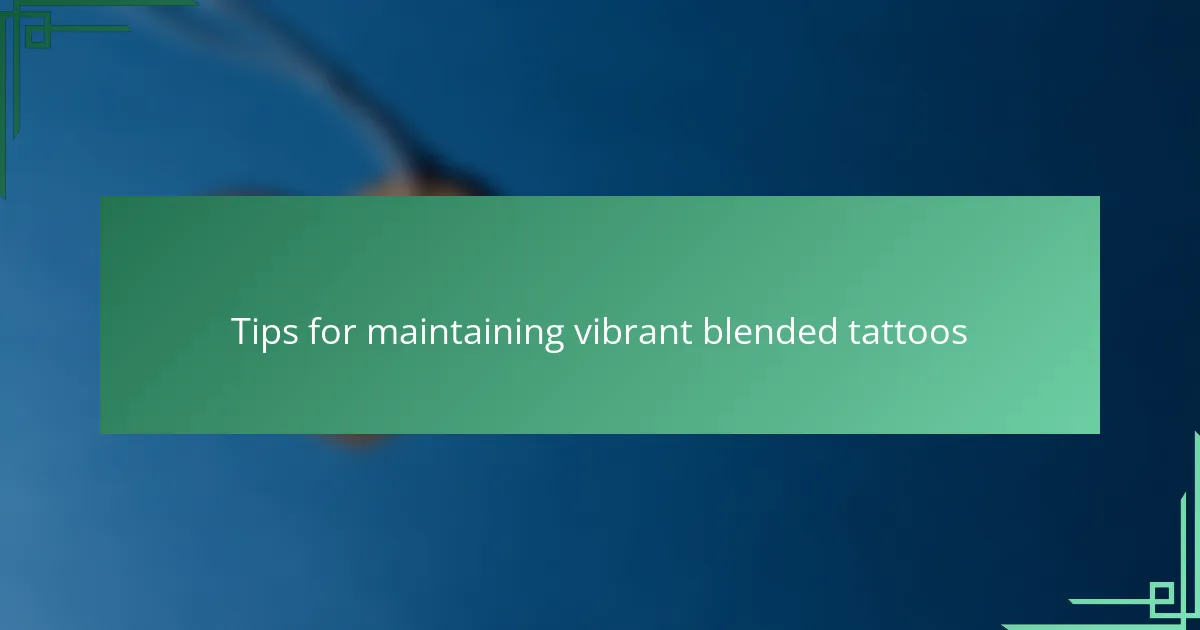
Tips for maintaining vibrant blended tattoos
Keeping vibrant blended tattoos looking fresh is an art in itself. From my experience, diligent moisturizing with fragrance-free lotions preserves the ink’s brilliance without causing irritation. Have you ever noticed how dry skin dulls even the most vivid colors? Consistent hydration really keeps those smooth transitions popping.
Sun protection is another game changer I can’t stress enough. Early on, I underestimated how much UV rays break down pigments, especially in blended areas where subtle hues can fade faster. Slathering on sunscreen and advising clients to avoid prolonged sun exposure became a non-negotiable part of my aftercare routine. Isn’t it amazing how a simple daily habit can extend a tattoo’s life?
Lastly, I’ve learned that touch-ups are a natural companion to blended work. Instead of seeing them as setbacks, I view each touch-up as an opportunity to deepen gradients and refresh details. After all, maintaining vibrancy is an ongoing dialogue between the art and the skin, not a one-time event. Have you found that embracing this keeps your pieces alive longer? I definitely have.
